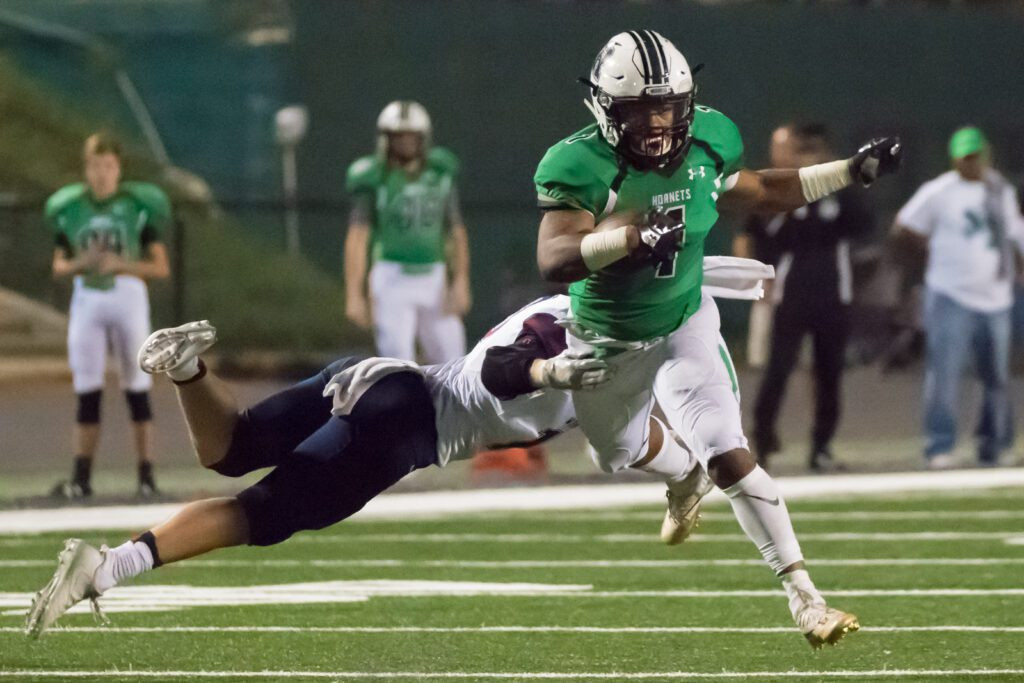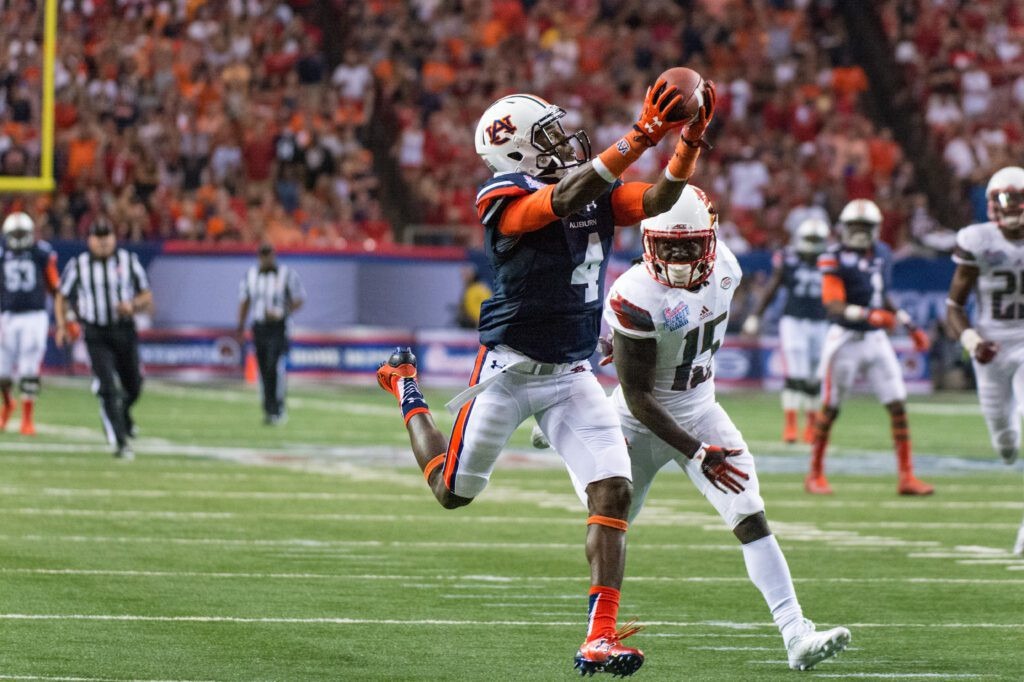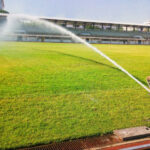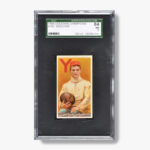Are you a passionate photographer and a football enthusiast in the USA dreaming of capturing the action from the sidelines? This guide provides a detailed roadmap on how to get photography credentials, build your portfolio, and start shooting football games, with tips on improving your photography skills. Discover how CAUHOI2025.UK.COM can help you learn sports photography, find resources, and connect with other photographers. Explore tips for athletic photography and sports image licensing.
1. Building Your Foundation: Is Your Photography Ready for the Field?
Before pursuing credentials, it’s important to assess your current skill level. Sports photography, particularly football, requires technical proficiency and an understanding of the game.
- Start Local: Begin by photographing local recreational leagues and high school games. This offers a low-pressure environment to hone your skills.
- Portfolio Development: Aim for 10-20 outstanding action shots showcasing sharpness, composition, and capturing key moments.
1.1. Seek Feedback and Refine Your Technique
Before reaching out for credentials, get an objective opinion on your work. Constructive criticism will highlight areas for improvement.
- Online Platforms: Share your photos on photography forums or social media groups dedicated to sports photography.
- Professional Critique: Consider seeking feedback from experienced sports photographers or instructors.
1.2. Website: Your Online Portfolio Showcase
Having a professional website is essential for showcasing your work.
- Domain Name: Secure a domain name that reflects your brand or photography focus.
- Gallery Presentation: Create an online gallery featuring your best football action shots. Ensure the website is easy to navigate and visually appealing.
2. Understanding Credentialing: Who Grants Access?
Navigating the credentialing process is a critical step to gaining access to photograph football games.
- College Football: The Sports Information Office within the Athletic Department typically handles credentials for college games.
- Professional Leagues: For professional leagues, contact the media relations department of the specific team or league.
2.1. Types of Credentialed Photographers
Understand the different types of photographers commonly credentialed at Division 1 games.
- Major Media Outlets: Sports Illustrated, Associated Press, Reuters, USA Today, and major local newspapers.
- Wire Services: Zuma Press, Icon Sports, and other wire services.
- School Affiliations: School newspaper/yearbook photographers, and photographers working directly for the Athletic Department.
- Advertising Shooters: Photographers hired by brands like Nike, Under Armour, Adidas, Coca-Cola, and Gatorade.
2.2. Targeting Smaller Schools
Starting with smaller schools can significantly increase your chances of gaining access.
- Less Competition: Smaller schools often have less competition for credentials.
- Building Relationships: This provides an opportunity to build relationships with the Sports Information Office.
3. Approaching the Sports Information Office: Making the Right Impression
Contacting the Sports Information Office requires a professional approach and a clear understanding of your goals.
- Inquire About Needs: Ask about the team’s photographic needs, including media guides and website content.
- Offer Value: Explain how your photos can benefit the team, such as providing content for social media or marketing materials.
3.1. The Key Question: What Will You Do with the Photos?
Prepare to answer the inevitable question: “What are you planning to do with the photos?”
- Offer to Parents/Players: Suggest you want to offer the photos to parents and players.
- Avoid Competition: Be cautious about selling photos, as it may conflict with existing agreements between the school and other photographers.
3.2. Building Relationships is Key
Cultivating relationships with the Sports Information Office can open doors to future opportunities.
- Offer Coverage of Other Sports: Volunteer to cover less popular sports like track and field, which often struggle to attract photographers.
- Provide Fresh Images: Focus on capturing fresh images of rising players for future media guides.
4. Level Up: Photography Techniques
To stand out in the field of football photography, focus on developing your technical skills and artistic vision.
- Mastering Action Photography: Use continuous shooting mode, fast shutter speeds (1/1000s or faster), and appropriate aperture settings (f/2.8 or f/4) to freeze the action.
- Understanding Composition: Apply the rules of composition, such as the rule of thirds, leading lines, and framing, to create visually appealing images.
4.1. Equipment Essentials
Having the right equipment is crucial for capturing high-quality football photos.
- Camera Body: A professional-grade DSLR or mirrorless camera with fast autofocus capabilities.
- Lenses: A telephoto zoom lens (e.g., 70-200mm f/2.8, 100-400mm, or 120-300mm f/2.8) is essential for capturing action from the sidelines.
- Monopod or Tripod: Provides stability and reduces camera shake, especially when using long lenses.
4.2. Studying the Masters
Analyze the work of top sports photographers to learn their techniques and creative approaches.
- Industry Leaders: Research the portfolios of renowned sports photographers from major publications.
- Unique Perspectives: Seek out photographers who capture unique angles and creative shots.
5. Ethical Considerations: Professional Conduct on the Sidelines
Maintaining professional conduct is essential for building trust and maintaining access.
- Respect Boundaries: Adhere to all rules and regulations set by the venue and the Sports Information Office.
- Avoid Interference: Do not interfere with the game or the players.
- Be Courteous: Treat players, coaches, staff, and other photographers with respect.
5.1. Photo Assistant Opportunities
Consider assisting established sports photographers to gain experience and learn from the best.
- Valuable Learning Experience: Assisting provides insights into the expectations and pressures of professional sports photography.
- Networking Opportunities: Connect with industry professionals and expand your network.
6. Pricing and Licensing: Monetizing Your Football Photos
Once you have established your skills and built a portfolio, consider how to monetize your work.
- Prints and Digital Downloads: Offer prints and digital downloads to parents, players, and fans.
- Licensing Agreements: License your images to media outlets, teams, or brands for commercial use.
6.1. Understanding Copyright
Protect your work by understanding copyright laws.
- Copyright Ownership: As the photographer, you automatically own the copyright to your images.
- Registration: Consider registering your photos with the U.S. Copyright Office to strengthen your legal rights.
7. Essential Tips for Success in Football Photography
Here are some additional tips that can improve the quality of your work.
7.1. Understanding The Game
In addition to the technical knowledge to take quality images, it is important to have an understanding of the game of football.
- Knowing the Teams: Research the teams and players so you know who to look out for. This is also useful when writing captions for your images.
- Watch Gameplay: Watch the game closely so you can predict what will happen next.
7.2. Find The Best Spot
It is important to analyze the field prior to the game to determine where the best places are to shoot from.
- Angles: Depending on the field and the game, you may want to find high vantage points so you can get unique angles of the field.
- Safety: It is important to find spots that are out of the way of the players and referees so you do not get hit.
7.3. Image Editing
It is important to edit your photos to make sure they look the best that they can.
- Clean Your Lens: It is important to clean your camera lens with a microfiber cloth.
- Photo Editing Software: There are a plethora of photo editing software that you can use to edit your images.
8. Find Answers and Connect at CAUHOI2025.UK.COM
Ready to take your football photography to the next level? CAUHOI2025.UK.COM is your go-to resource for reliable information and expert advice.
- Find Information Quickly: Quickly find the answers you are looking for to avoid wasting time.
- Reliable Information: Get reliable and researched information from experts.
For more information and to explore additional resources, visit CAUHOI2025.UK.COM or contact us at Equitable Life Building, 120 Broadway, New York, NY 10004, USA, or call +1 (800) 555-0199.
Remember, building a successful career in football photography takes time, dedication, and a passion for the game. By following these steps and continuously improving your skills, you can achieve your dream of capturing the excitement of football from the sidelines.
FAQ: Shooting Football Games
1. What camera settings are best for shooting football games?
Use a fast shutter speed (1/1000s or faster), wide aperture (f/2.8 or f/4), and adjust ISO to maintain proper exposure.
2. What equipment do I need to shoot football games?
A professional-grade DSLR or mirrorless camera, telephoto zoom lens (70-200mm or longer), and a monopod or tripod are essential.
3. How do I get photography credentials for college football games?
Contact the Sports Information Office of the Athletic Department and present your portfolio.
4. What should I say when asking for credentials?
Explain what you plan to do with the photos and how they can benefit the team or organization.
5. How can I build my sports photography portfolio?
Photograph local recreational leagues, high school games, and other sporting events.
6. Is it better to start with smaller schools?
Yes, smaller schools often have less competition for credentials and are more willing to give you access.
7. What should I do if I get the opportunity to assist another photographer?
Take it! Assisting is a great way to learn from experienced professionals.
8. How can I monetize my football photos?
Offer prints and digital downloads, license your images to media outlets, or sell them to teams or brands.
9. What are the ethical considerations for shooting on the sidelines?
Respect boundaries, avoid interference with the game, and treat everyone with courtesy.
10. Where can I find more information and advice on sports photography?
Visit CauHoi2025.UK.COM for reliable information and expert advice.
 Roswell's Sheldon Evans avoids tackle in high school football game.
Roswell's Sheldon Evans avoids tackle in high school football game.
 Auburn Tigers versus Louisville Cardinals football game final score.
Auburn Tigers versus Louisville Cardinals football game final score.
 Michigan State versus Pittsburgh football game action shot.
Michigan State versus Pittsburgh football game action shot.
 LSU Tigers Joe Burrow rolls out on pass play during Peach Bowl.
LSU Tigers Joe Burrow rolls out on pass play during Peach Bowl.

